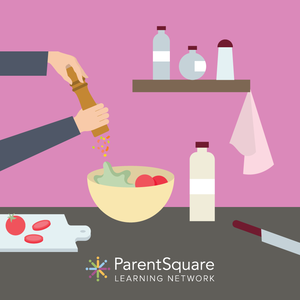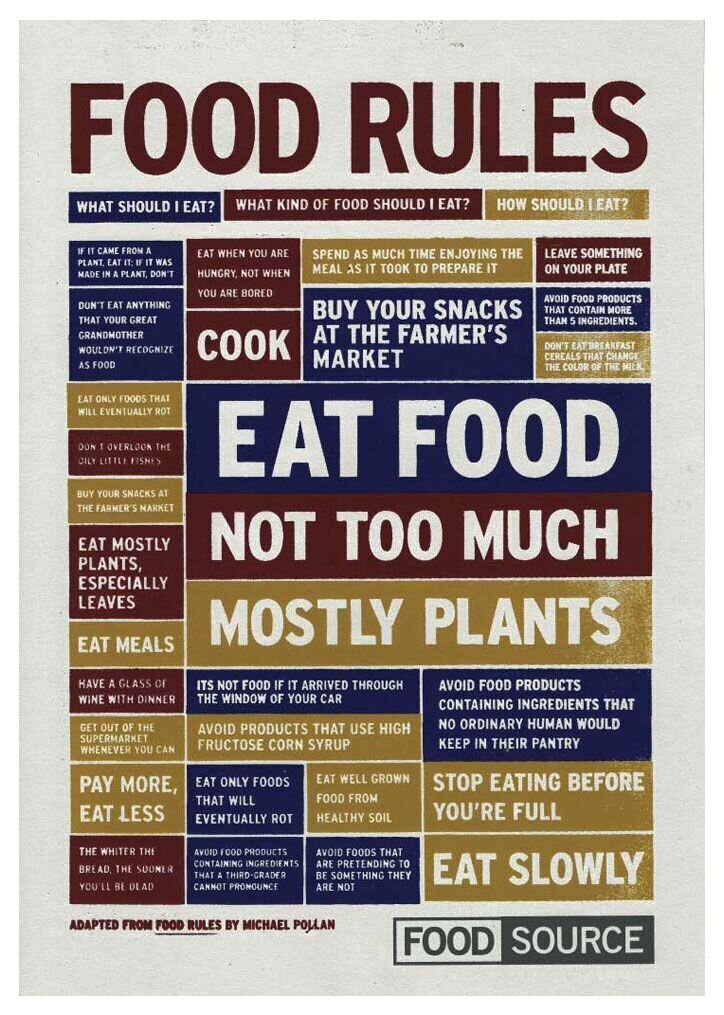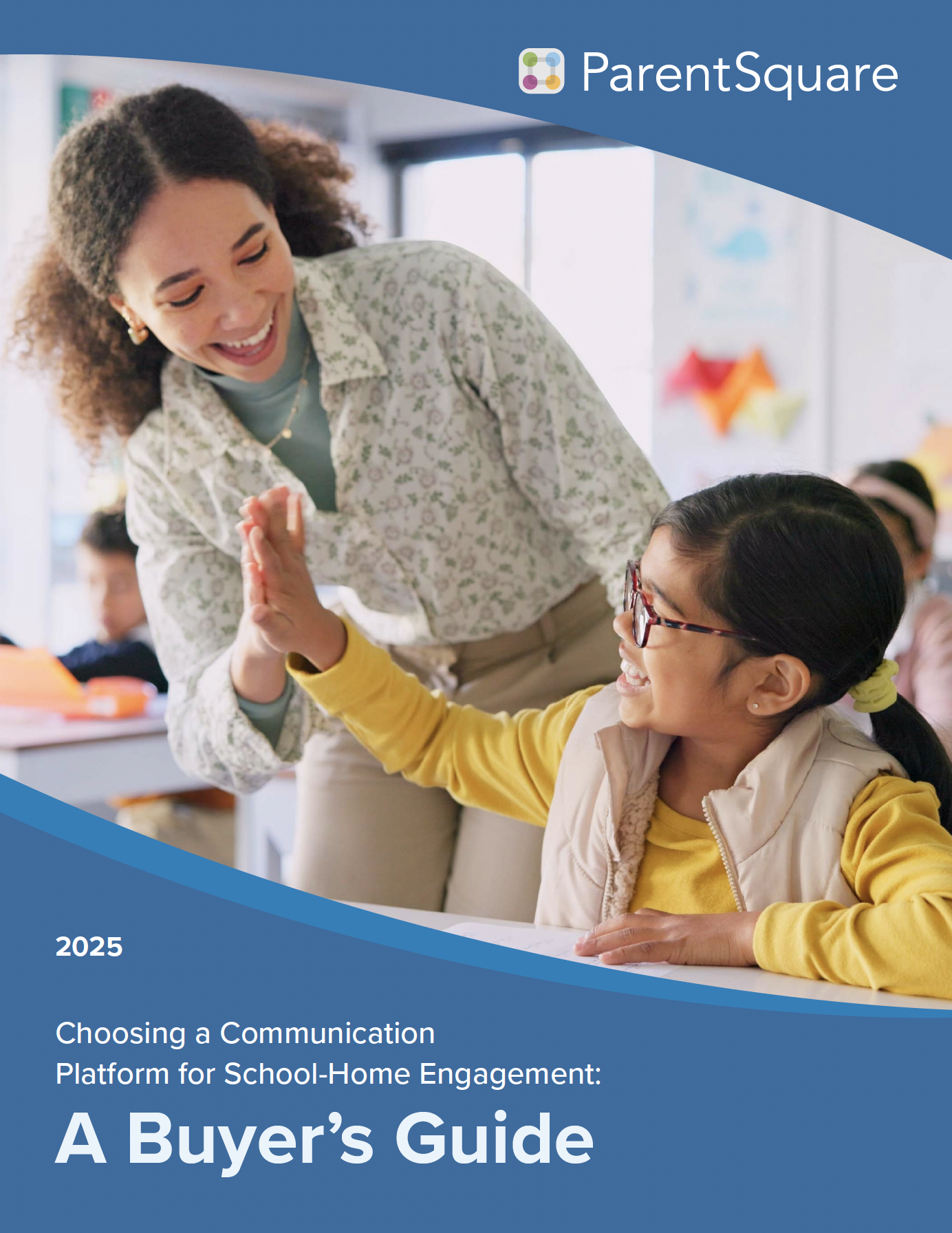This post originally appeared on our ParentSquare Learning Network blog on December 11, 2019.
Guest post by Claire Berger
Claire is a passionate cooking teacher, gently guiding young children to make healthy choices every week during her Cooking Club enrichment classes at the Valley Beth Shalom Early Childhood Center in Encino, California. Visit www.clairescookingclub.com to learn more!

Tis the season to be cooking!
As winter break approaches, keep the learning alive by encouraging your parents to cook with their kids. During the holidays, parents will have more time with their kids than usual — and so this is a great time for parents to cook with their kids and create meaningful memories. Plus, it will be great family fun during the holidays!
Watch a child chop crisp lettuce, squeeze a juicy lemon, spread creamy cheese, measure pasta and mix a big batch of cookie dough, you’ll see firsthand the cooking skills that help develop a child’s small muscle control, develop all senses and enhance hand-eye coordination. It’s impossible to separate hands-on cooking activities from physical development for young children.
Cooking inspires children’s innate curiosity, thinking, and problem solving — offering delicious opportunities to make choices and observations. Additionally, cooking offers major leaps in cognitive development with authentic opportunities for children to understand measuring and counting. When your student organizes ingredients, follows a sequence and shares with their friends, self-confidence grows, not just in the kitchen, but in every aspect of their life.
For very small children, cooking together offers a great opportunity for language development. Help your children learn food groups and answer questions inspired by their new discoveries. Ask a child to explain how something tastes, how it feels, how it smells. You’ll love their honest responses.
Classroom tip: An inspiring way to facilitate cooking at home is to spend time teaching kids in your class. You can host a holiday treat mingle for kids and their families and prepare the food with your students! If that sounds a bit daunting, you can simply send a message home letting parents know that you cooked in class and attach pictures of the delicious results! Also, encourage your students to “teach” their parents what they made in class over the break! Not only is this a great way to foster quality, face-to-face time (which builds social emotional growth) but cooking is beneficial for cognitive and physical development.
Grocery shopping may be a chore for adults, but children see it as an exciting treasure hunt, an opportunity filled with new discoveries. Encourage parents to help their children identify colors, shapes, smells, sounds and tastes. Did you know Trader Joe’s employees will happily open any package to give you a taste of something new?
Teaching children to cook also helps them understand and respect the ingredients, along with the effort that goes into their food. Food writer Michael Pollan says it best, “Eat all the junk food you want — as long as you cook it yourself. That way, it’ll be less junky, and you won’t eat it every day because it’s a lot of work.” Pollan’s ‘Food Rules’ is one of my favorite food manifestos and should be proudly displayed on family fridges as a visual reminder to make healthy choices.

POLLAN’S “FOOD RULES”
I know, I know. Everyone is tired after a long day of work and cooking with kids can be messy and laborious. But it can also be a fun, memory-making tradition. When children get older, Taco Tuesdays with Daddy may become a tradition they’ll carry on long after they leave the nest. Sunday Sack Lunch Meal Prep can turn into a party, much like the traditional holiday cookie exchanges, when you invite neighbors and friends to contribute to the array of offerings to be tucked into lunch bags and bento boxes.
My goal is always to create community through cooking. Food is meant to be shared and we can learn so much about each other’s families and cultures by sharing a meal.
Food should never be the source of conflict or a negotiation tool. It should not be used as a bribe or reward. Food is the best reason to gather together, shut down technology, and look into our loved ones’ eyes while passing the potatoes. A Harvard study found that families who eat together are twice as likely to eat fresh fruits and vegetables as families who don’t eat together. Kids who eat family meals tend to eat a wider variety of foods and become less picky eaters.
Classroom tip: Host a potluck with families in your class! Encourage parents to cook a traditional dish from their culture with their kids and bring it to the potluck. If parents are willing, ask them to share their recipe with you, and send out a “cookbook” document with all of the recipes! Not only will this be a fun, community-building event for your classroom but it will also be a fantastic learning experience for your students by exposing them to different cultural foods! And it goes beyond expanding their tastebud palette — it sparks learning opportunities and inspiration for families to cook new meals together. Did one student love the pho soup? Now they can make it at home and learn more about Vietnamese culture!
Holidays can be fraught with eating challenges for the entire family. From the candy canes impossibly stuck to car seats (and their cherubic occupants) to accidental holiday cookie overdoses, every family struggles with balancing holiday treats with healthy eating this time of year, and so it can be helpful to share some helpful resources with parents before going into break. Setting a good example by serving deliciously healthy options at family meals and making smart choices when eating out gives your children great food models.
I am also a fan of Ellen Satter’s Division of Responsibility in Feeding, which I find to be super sane, sensible and easy to follow.
I wish everyone a healthy, stress-free holiday season filled with yummy recipes, For inspiration, please contact me at clairescookingclub@gmail.com.

